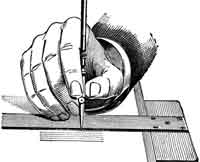Difference Between BMR and RMR
• Categorized under Health | Difference Between BMR and RMR

Basal Metabolic Rate (BMR) and Resting Metabolic Rate (RMR) are rates used to estimate the amount of calories a person will burn if he is at rest for 24 hours. Â It is used to determine the minimum amount of energy a person requires to keep his body functioning, his heart beating, his lungs breathing and to keep his body temperature normal.
They are conducted the same way but there are very many differences between the two; one is that BMR is measured under more restrictive conditions, while RMR is measured under less restrictive conditions.
There are many requirements before a person’s Basal Metabolic Rate can be taken, while taking a person’s Resting Metabolic Rate has no requirements at all. Here are some of the features of the two metabolic rates:
Basal Metabolic Rate
Basal Metabolic Rate is the rate that an organism gives off heat while at complete rest. Â It is measured while the person is awake but at complete rest. Â It is often conducted in a darkened room upon a person’s waking up after at least 8 hours of sleep.
To get the correct BMR of a person, it is important that he does not exert any extra energy while doing the test. Â This is why a person who is being subjected to a BMR test is required to stay at the testing facility the night prior to the test.
He is made to lie in a reclining position, resting completely. Â He is required to fast for 12 hours before testing to ensure that his digestive system is not working during the procedure. Â During this time the energy released by his body should only be sufficient to let his vital body organs to function.
Resting Metabolic Rate
Also known as Resting Energy Expenditure (REE), Resting Metabolic Rate is measured under less restrictive conditions than Basal Metabolic Rate. Â It does not require the person to spend the night in the testing facility to ensure at least 8 hours of sleep and rest before testing.
He is still required to rest in a reclining position while the test is being taken but he does not need to get 8 hours of sleep.
Calorie counters and calculators usually use Resting Metabolic Rate rather than Basal Metabolic Rate because the conditions upon which the RMR rates are taken reflect the normal situation in a person’s day to day activities. Â So the results are more realistic.
Summary
1. Basal Metabolic Rate is taken under very restrictive conditions, while Resting Metabolic Rate is taken under less restrictive conditions.
2. Before the Basal Metabolic Rate is taken, the person is required to stay at the testing facility, while in taking the Resting Metabolic Rate; the person can stay wherever he wants.
3. Basal Metabolic Rate requires the person to have at least 8 hours of sleep, while Resting Metabolic Rate does not.
4. Twelve hours of fasting is required before the Basal Metabolic Rate can be taken, while no fasting is required before taking the Resting Metabolic Rate.
- Difference Between Mocha and Coffee - January 11, 2012
- Difference Between Verb and Predicate - January 2, 2012
- Difference Between Tropical Meteorology and Monsoon Meteorology - January 2, 2012
Sharing is caring!
Search DifferenceBetween.net :
Cite
APA 7
M, E. (2011, January 23). Difference Between BMR and RMR. Difference Between Similar Terms and Objects. https://www.differencebetween.net/science/health/difference-between-bmr-and-rmr/.
MLA 8
M, Emelda. "Difference Between BMR and RMR." Difference Between Similar Terms and Objects, 23 January, 2011, https://www.differencebetween.net/science/health/difference-between-bmr-and-rmr/.
Leave a Response
Written by : Emelda M. and updated on 2011, January 23
See more about : energy, Metabolism, Resting Metabolic Rate
